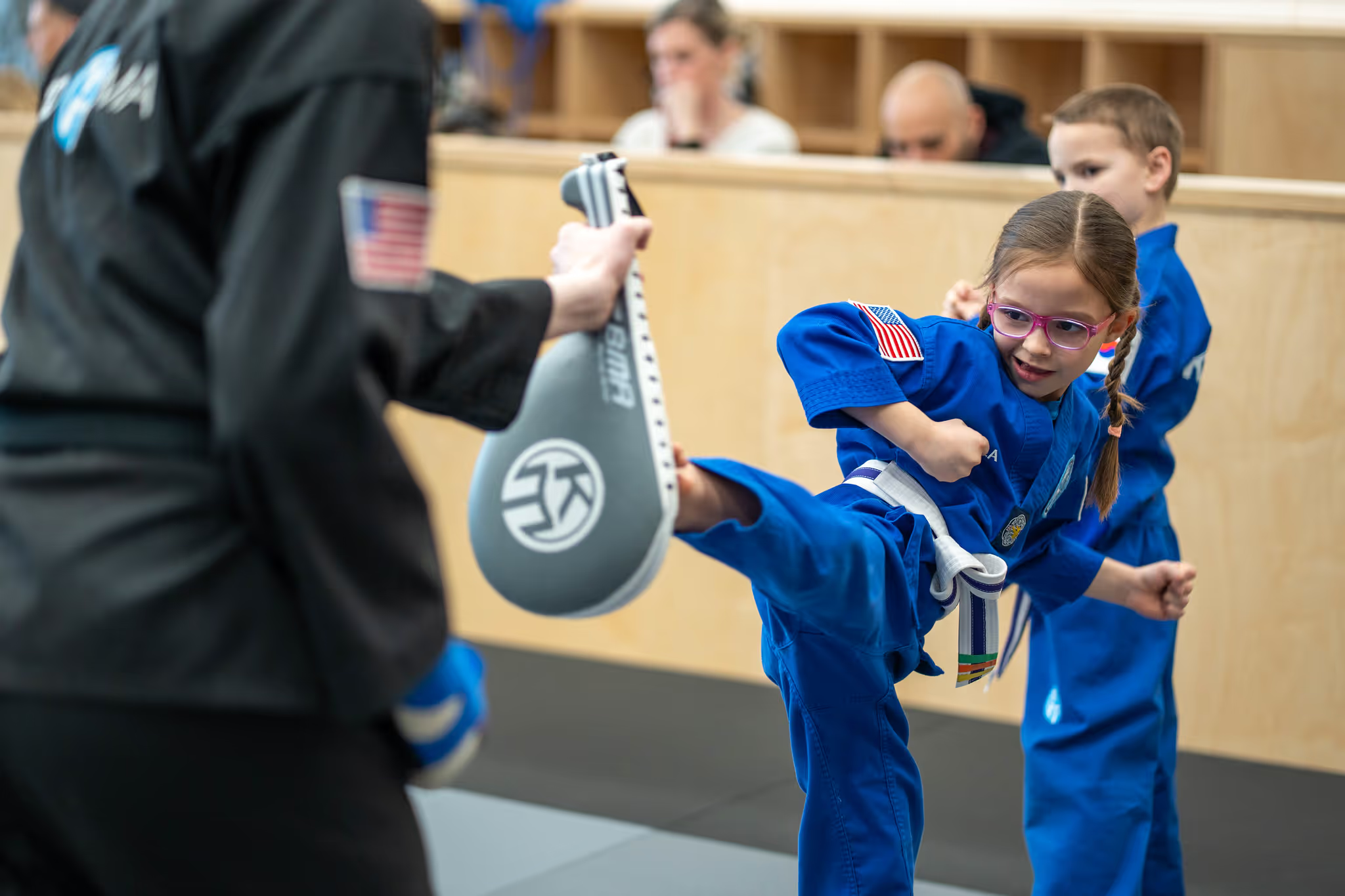When kids begin martial arts, they’re not just learning stances and kicks. They’re stepping into an environment where they’ll hear a lot of feedback, both good and constructive. For children, especially those still figuring out how to handle correction, this can be a new and sometimes emotional experience.
Learning how to process that feedback the right way gives them a skill that goes far beyond the classroom. It teaches them how to take direction, make adjustments, and grow from it without taking things personally or giving up. Over time, they become more confident, better at communicating, and more open to trying again after mistakes. With the right support, this experience can help shape their character in a positive way. That’s something we care deeply about at KOMA Taekwondo.
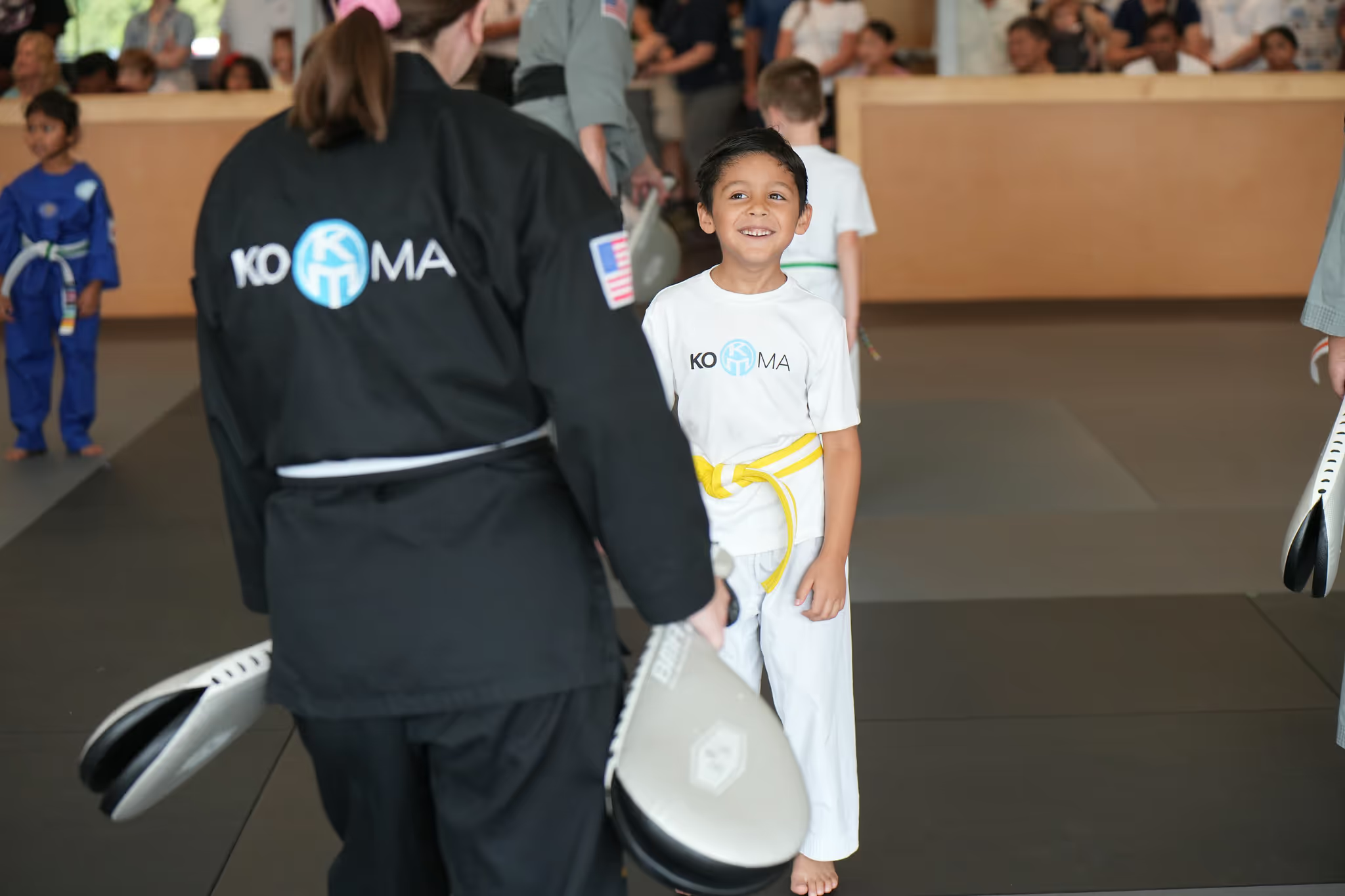
Understanding Feedback in Martial Arts
Feedback shows up in martial arts in lots of ways. Sometimes it’s a high-five after a good class. Other times, it’s a reminder to keep their hands up or adjust a kicking stance. It might even be a private conversation about staying focused during drills or trying harder to follow instructions.
Here are a few common types of feedback kids may hear in training:
- Positive reinforcement: Like “Nice job keeping your hands up” or “You’ve improved your form.” This builds confidence and encourages continued effort.
- Constructive correction: Such as “Try to pivot more on your back foot during your kick.” These comments help them adjust and improve specific techniques.
- Progress updates: Instructors may share how a student is developing over time or what needs more work before they’re ready for a new belt level.
The delivery of these comments matters just as much as the content. Instructors at KOMA Taekwondo don’t just point out what’s wrong. They guide students clearly without discouraging them. Their tone, attitude, and timing help kids stay positive even when they’re being corrected. This builds trust and makes it easier for students to accept feedback without shutting down.
Feedback isn’t meant to embarrass or frustrate children. It’s there to shape their habits, help them find consistency, and prepare them for real-life situations where they’ll need to take input from others. The earlier they understand that, the quicker they learn to benefit from it.
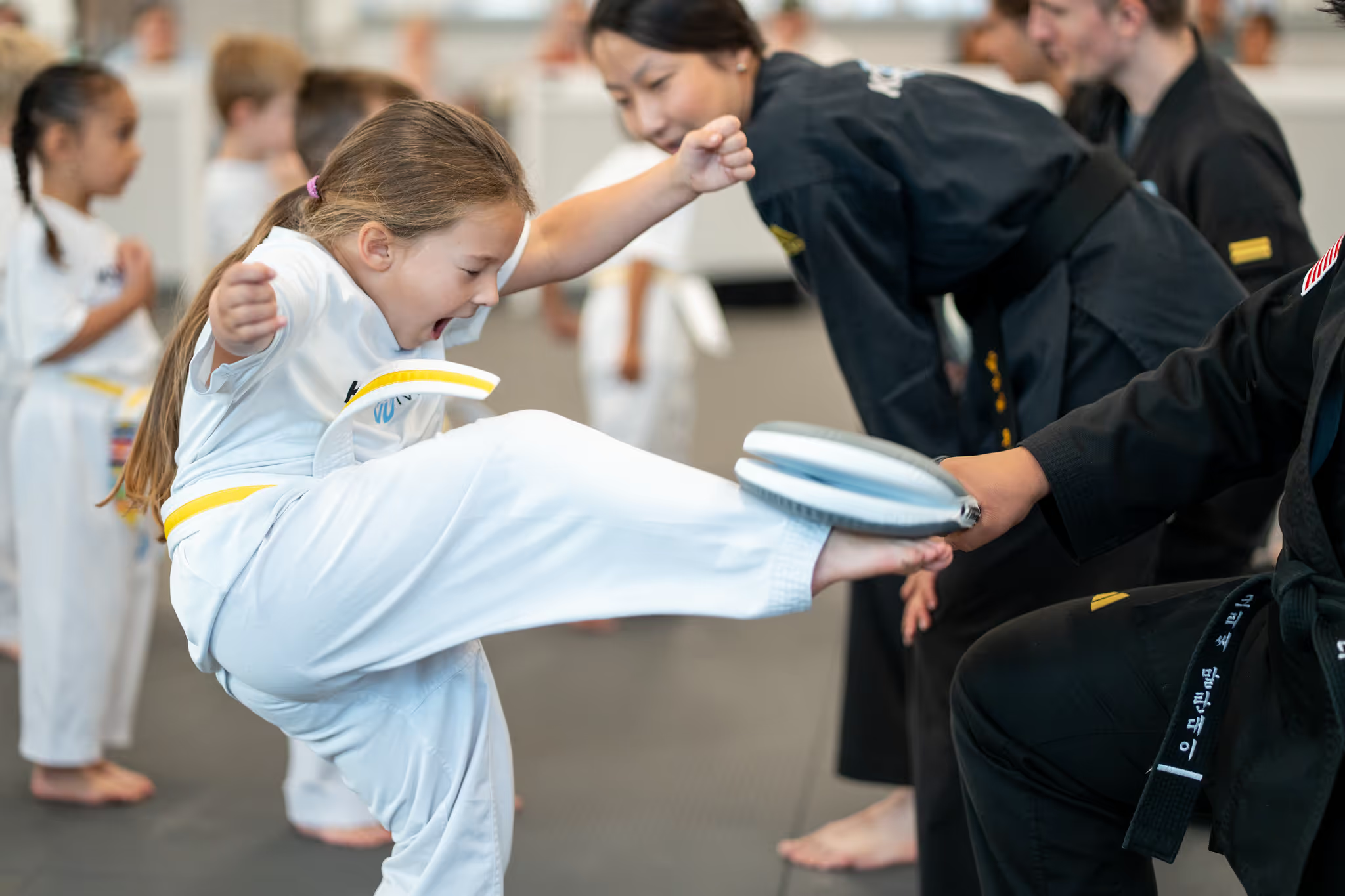
Helping Children Interpret Feedback
Getting feedback is one thing. Knowing what to do with it is another. Some kids interpret correction as something negative, thinking they’ve done something wrong or failed. That mindset can make them hesitant to try or afraid to make mistakes, which slows learning.
Teaching children how to interpret feedback in a healthy, productive way can begin with a few simple habits:
1. Encourage active listening. Help them focus on the words without thinking they’re being scolded.
2. Remind them to ask questions. If they don’t understand the feedback, it’s okay to ask for clarification. For example, “What do you mean by keeping my balance better?”
3. Go over the feedback at home. Parents can ask kids what kind of instructions they got during class and talk it through in a calm and supportive way.
4. Notice when they apply it. This helps children link their effort to improvement, which boosts motivation.
For example, if an instructor reminds a child to keep their eyes forward during a form, and the child tries that at home and sees improvement, that connection builds understanding. They learn that feedback isn’t just talk. It’s a helpful tool that leads to real progress.
The better children get at making sense of feedback, the more confident and independent they become. They aren’t just listening. They’re thinking, asking, and taking charge of how they grow from it.
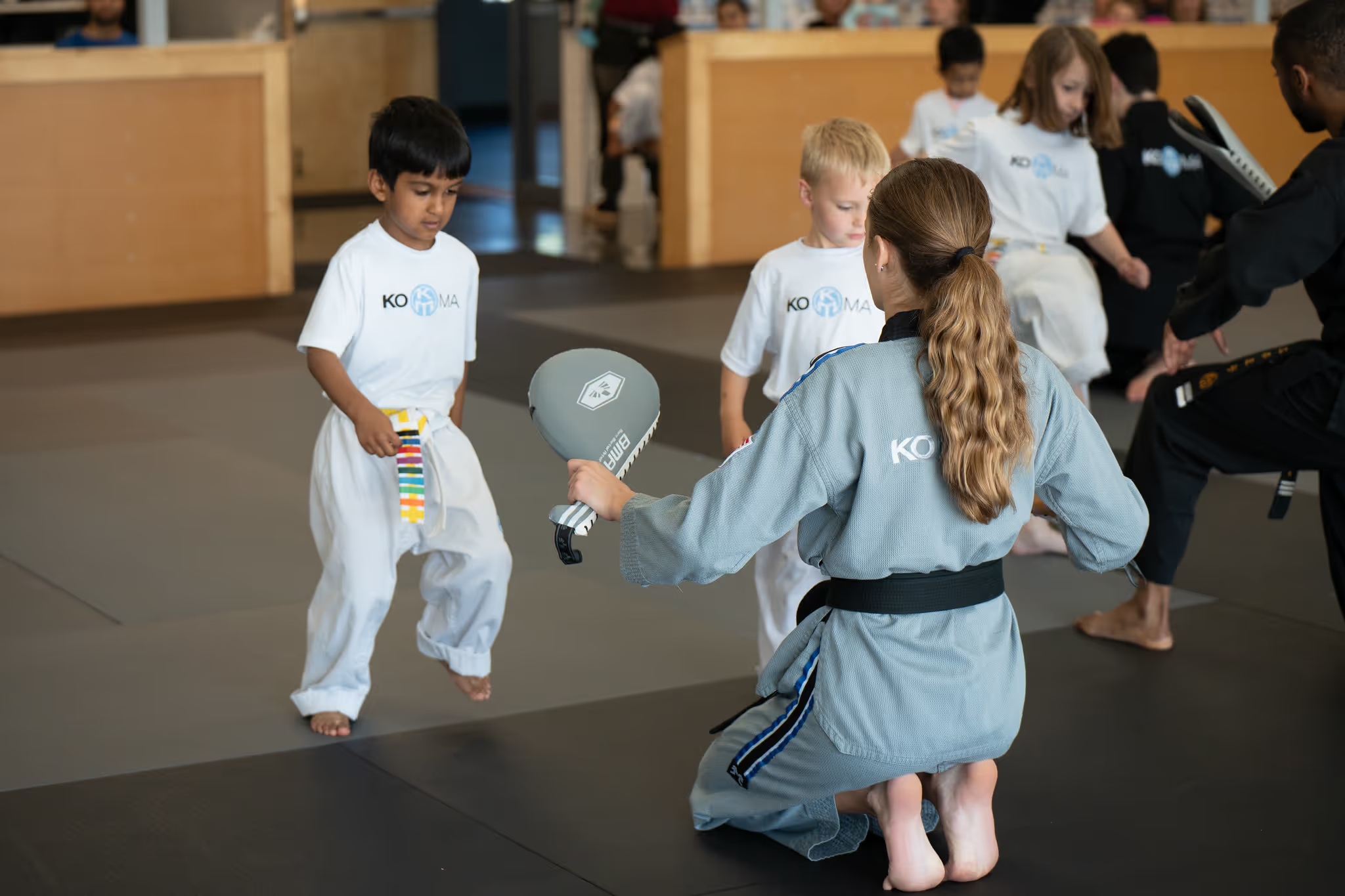
Building Resilience Through Feedback
Learning how to respond to feedback isn’t automatic for kids. They may get discouraged the first few times they’re corrected, especially if they’re used to getting praise for effort alone. But that’s exactly where resilience starts. It’s building the ability to hear something they may not like and still keep pushing forward.
One way children build resilience in martial arts is by making small corrections over time. If a child keeps forgetting to maintain balance during a particular technique, it might take several cues from an instructor before it clicks. The persistence required to keep trying, even when something isn’t natural at first, helps kids develop grit.
Parents can also play a role in this at home by reinforcing the value of effort over perfection. For example, when a child comes home and says, “I messed up during my form,” a helpful response is something like, “What did your instructor say to help you improve?” That follow-up question shifts the focus from the failure to the feedback and how the child plans to grow from it.
Here’s how students can build resilience through feedback:
- Accept that mistakes are part of learning
- Look at corrections as learning points, not personal criticism
- Keep track of small wins after applying feedback
- Reflect on how they handled correction and what they could do differently next time
Over time, they stop fearing feedback and begin to expect it. That shift means they’re thinking less about being perfect and more about improving. That mindset will serve them well way beyond the mat.

Creating a Positive Feedback Loop
Positive growth doesn’t come from feedback alone. It also comes from how it’s given and received consistently. When kids are in an environment where they feel supported and respected, they’re more open to learning. They don’t see corrections as negative, but as small nudges toward improvement.
Creating this kind of feedback loop starts with modeling. When students hear instructors give respectful and honest feedback, they learn to do the same with one another. With some guidance, kids can even start offering encouragement and suggestions to each other. That builds shared accountability and teamwork.
To help your child contribute to a healthy feedback loop, you can:
- Encourage them to thank someone who gives them clear, helpful feedback
- Talk about respectful language, like saying “Maybe try it this way next time” instead of correcting harshly
- Celebrate their progress, not just achievements, but improvement based on previous challenges
When the whole environment supports this kind of exchange, kids start to realize feedback isn’t something to avoid. It’s something to be thankful for. That shift helps keep them motivated and connected with their peers and instructors.
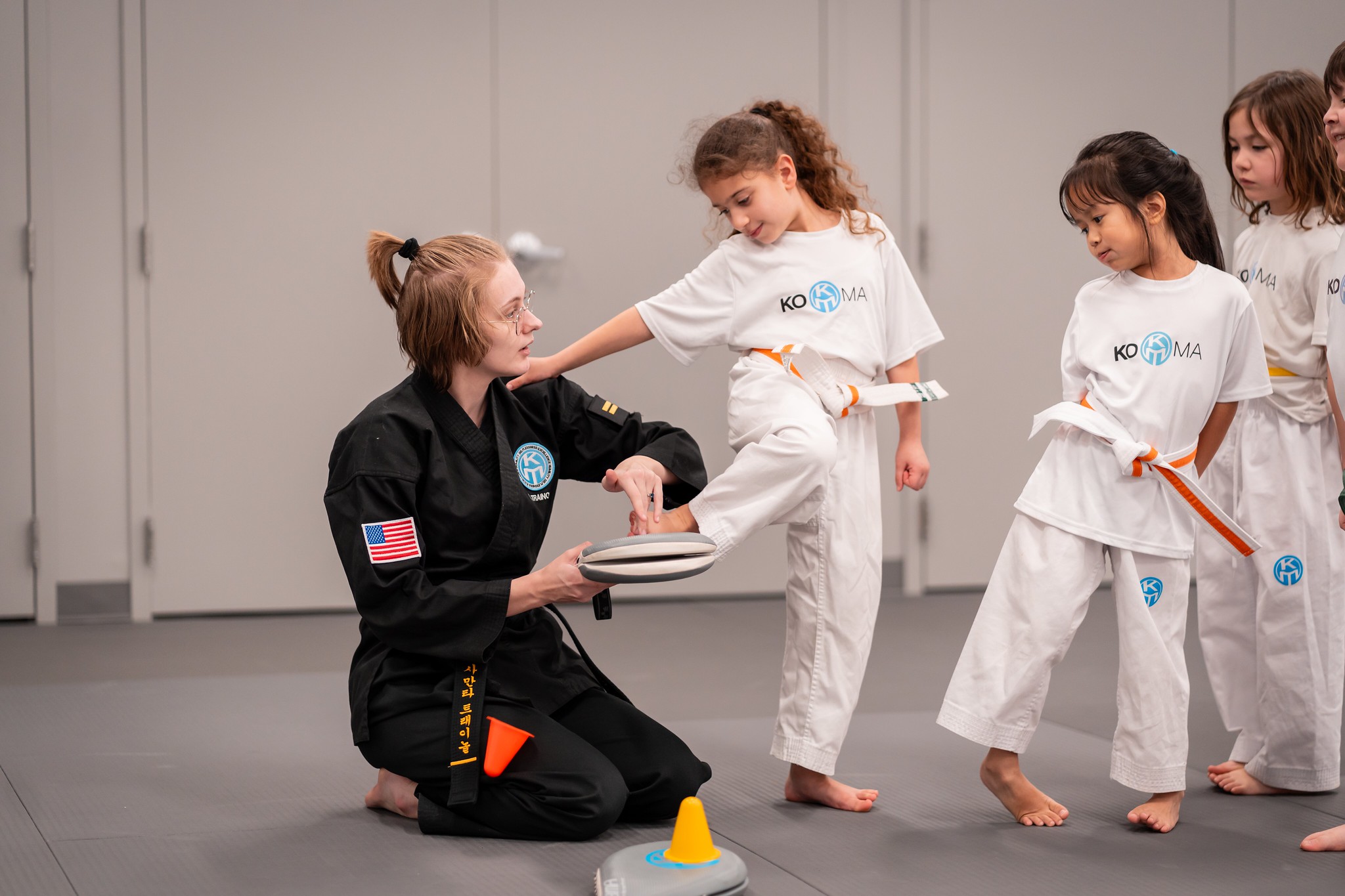
Why Feedback Helps Kids Grow Stronger
Taking in feedback, understanding it, and learning what to do with it can help kids handle frustration, trust others’ guidance, and keep trying even when things feel tough. These experiences give them skills that stick, like listening carefully, adjusting their actions, and staying positive under pressure.
The good part is these skills don’t stop at martial arts. They show up at school, in friendships, and in any group setting where teamwork or patience is needed. When feedback becomes something they expect and even welcome, kids grow into thoughtful, capable decision-makers.
A training environment that respects each child’s pace, supports their emotional growth, and encourages every step forward plays a big role. With steady support over time, those moments of correction build a stable foundation kids will stand on far beyond their martial arts practice.
By helping children process feedback effectively, they can thrive both in martial arts and everyday life. This skill not only builds their confidence but also enhances patience and communication. If you're considering martial arts for children to support their development, come discover the welcoming and encouraging environment at KOMA Taekwondo, where kids grow through every class.




